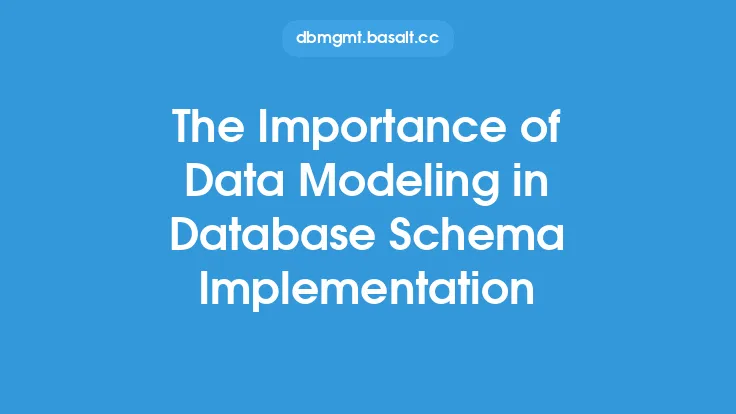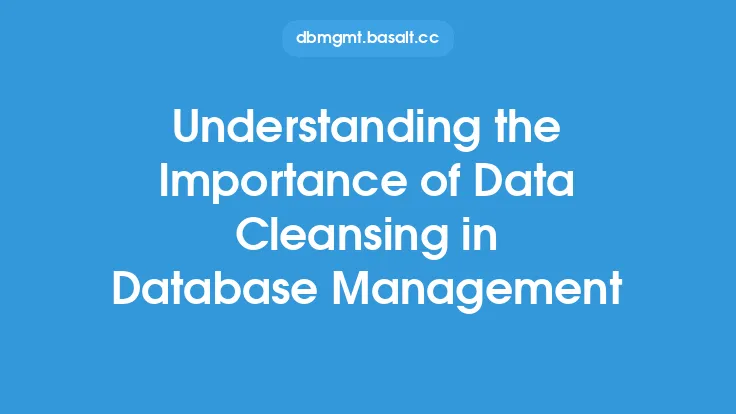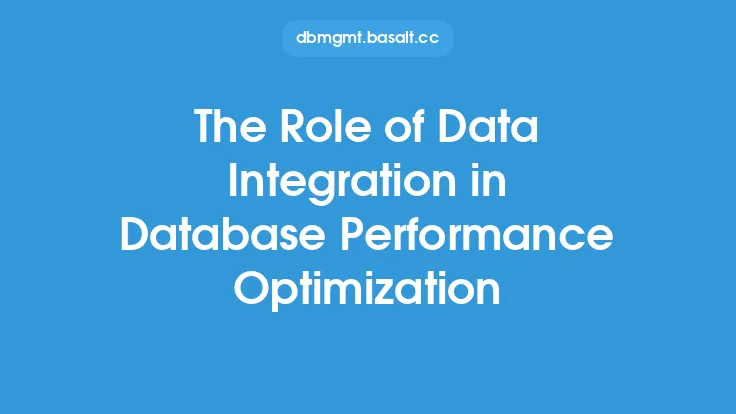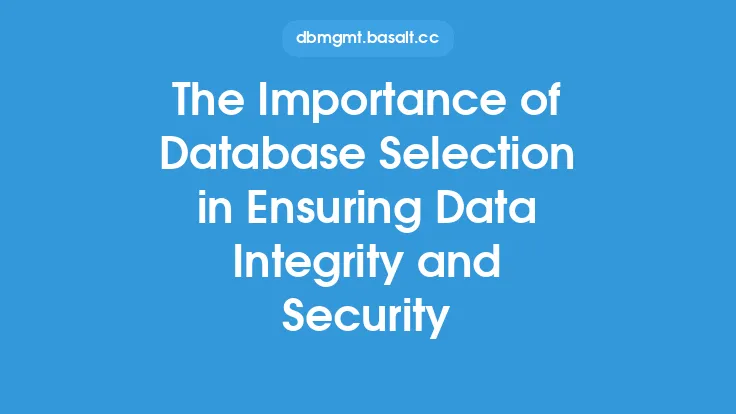Data integration is a critical component of database implementation, as it enables organizations to combine data from multiple sources into a unified view, providing a single, accurate, and up-to-date version of the truth. This is essential in today's data-driven world, where businesses rely on data to make informed decisions, drive growth, and stay competitive. In this article, we will delve into the importance of data integration in database implementation, exploring its benefits, challenges, and best practices.
Benefits of Data Integration
Data integration offers numerous benefits, including improved data consistency, reduced data redundancy, and enhanced data quality. By integrating data from multiple sources, organizations can eliminate data silos, reduce errors, and provide a single, unified view of the data. This, in turn, enables better decision-making, improved customer service, and increased operational efficiency. Additionally, data integration enables organizations to leverage their data assets more effectively, driving business growth and innovation.
Challenges of Data Integration
Despite its benefits, data integration can be a complex and challenging process. One of the primary challenges is dealing with disparate data sources, each with its own unique format, structure, and quality. This can make it difficult to integrate the data, particularly if the sources are not compatible or if the data is not standardized. Other challenges include data governance, data security, and data quality, which must be addressed to ensure that the integrated data is accurate, reliable, and secure.
Data Integration Techniques
There are several data integration techniques that organizations can use to integrate their data, including ETL (Extract, Transform, Load), ELT (Extract, Load, Transform), and data virtualization. ETL involves extracting data from multiple sources, transforming it into a standardized format, and loading it into a target system. ELT, on the other hand, involves extracting data from multiple sources, loading it into a target system, and then transforming it into a standardized format. Data virtualization, meanwhile, involves creating a virtual layer that integrates data from multiple sources, providing a unified view of the data without physically moving it.
Data Integration Architecture
A well-designed data integration architecture is critical to the success of any data integration project. This architecture should include several key components, including data sources, data targets, data transformation, and data governance. The data sources component should include all the sources of data that need to be integrated, while the data targets component should include the systems or applications that will receive the integrated data. The data transformation component should include the rules and processes for transforming the data into a standardized format, while the data governance component should include the policies and procedures for ensuring data quality, security, and compliance.
Best Practices for Data Integration
To ensure the success of a data integration project, organizations should follow several best practices. These include defining clear business requirements, establishing a robust data governance framework, and using standardized data integration tools and technologies. Additionally, organizations should prioritize data quality, ensure data security, and provide ongoing support and maintenance for the integrated data. By following these best practices, organizations can ensure that their data integration project is successful, efficient, and effective.
Data Integration and Database Design
Data integration is closely tied to database design, as the integrated data must be stored in a database that is designed to support the organization's business requirements. A well-designed database should include several key components, including a robust data model, a scalable architecture, and a secure and reliable storage system. The data model should include all the entities, attributes, and relationships that are necessary to support the organization's business requirements, while the architecture should be scalable to support growing data volumes and user demands. The storage system, meanwhile, should be secure and reliable, with built-in redundancy and backup systems to ensure data availability and integrity.
Conclusion
In conclusion, data integration is a critical component of database implementation, enabling organizations to combine data from multiple sources into a unified view. By understanding the benefits, challenges, and best practices of data integration, organizations can ensure that their data integration project is successful, efficient, and effective. Whether using ETL, ELT, or data virtualization, organizations should prioritize data quality, ensure data security, and provide ongoing support and maintenance for the integrated data. By doing so, organizations can leverage their data assets more effectively, driving business growth, innovation, and success.





